I painted and assembled this set over 2 days' off work I had a couple of weeks ago. When painting horses nowadays I like to work from photos, particularly when doing some of the more "funky" colours that I do for American horses. I chose a bay overo, an appaloosa, a chestnut sabino and a palomino. Overos and palominos are staples for my American cavalry units, but it's been a while since I've painted an appaloosa and I don't think I've ever painted a sabino.
Chestnut sabino (l) and palomino (r)
The colours I used for the horses were these:
- bay overo: Foundry "Tan 14" with markings in "Arctic Grey 33";
- appaloosa: base colour of Coat d'Arms Uniform Grey 525 with highlights using a variety of other Coat d'Arms greys and whites; spots with Foundry "Bay Brown 42";
- chestnut sabino: Foundry "Conker Brown 54" with markings in "Arctic Grey 33";
- palomino: base colour of Foundry "Palomino 56" with mane and tail in "Austrian White 67".
Appaloosa (l) and bay overo (r)
For the hooves I used Foundry Rawhide 11B and C. In real life, the colour of hooves on horses is generally determined by the colour of the leg just above the hoof: the lighter the leg then lighter the colour of the hoof. However, I think having different coloured hooves on 28mm figures just looks a bit odd and so all my horses get the same hoof colour irrespective of whether they have a white or dark sock etc. Something else one notices when looking at photos of real horses is that the ends of the tails often have bits of different colour. The photo of the chestnut sabino showed some copper going right up to the buttock on the inside of the tail, and I've tried to replicate that. For furniture and other bits and bobs I used the following:
- reins/bridle etc: base coat of GW Rhinox Hide with a single highlight of Foundry "Spearshaft 13A";
- saddle cloth: Foundry "Storm Blue 39" palette (this is my standard AWI saddle cloth colour; Troiani et al often show dark grey/dark blue, so that's what I use);
- collar: Foundry "Dusky Flesh 6" and "Spearshaft 13" for the wooden support.
For the wagon itself, I looked at various photos on the internet to see whether I should go with "natural" or painted woodwork. Examples of the latter included blue, red and green. I settled on what I think is quite an attractive colour combination: mid-blue for the bodywork and then "red oxide" for the chassis and wheels. The (resin) canvas top of the wagon was painted with the Foundry "Canvas 8" palette. I needed two coats of the A colour and then heavy dry-brushing with the B and C colours. The main palette colour I used for the wagon itself was Foundry "Prussian Gun Mid-Blue 106". The base coat was the A colour; I left out the B colour and did some wood-grain effect highlighting with the C colour and then C plus white. For the sacks I used various Foundry colours: "Palomino 56", "Deep Brown Leather 45", a couple of WW2 palettes that have been discontinued, and then "Spearshaft 13" for the barrels. It's a bit difficult to work out precisely what is in the wagon other than the clearly-visible sacks etc. There's a tarpaulin there, so I assumed that would have been rain-proofed and painted it black. The chassis and wheels were painted with Foundry "Terracotta 37".
I'll add some traces at some stage, but I wanted to get this photographed while I had a spare moment and it wasn't raining. I'm pretty sure the chap at the front is in the wrong place, but I didn't have enough room on the bas to put him to the right side of the front right horse, which is where he stands in the pic on the Perry website. There are a couple of other mistakes: the metal work is too bright I think, and I'm really not sure about that the yokes are in the right place - I found these bits very difficult to sort out and almost superglued my fingers together several times. I also found the resin rather brittle - a couple of bits broke off but I couldn't tell whether they were part of the kit or just flash. But overall I think this is an excellent model from the Perries and it's worth taking the time to put it together. It's the sort of thing, along with ammunition carts and limbers, that will always appear on the table.
Painted June 2016.

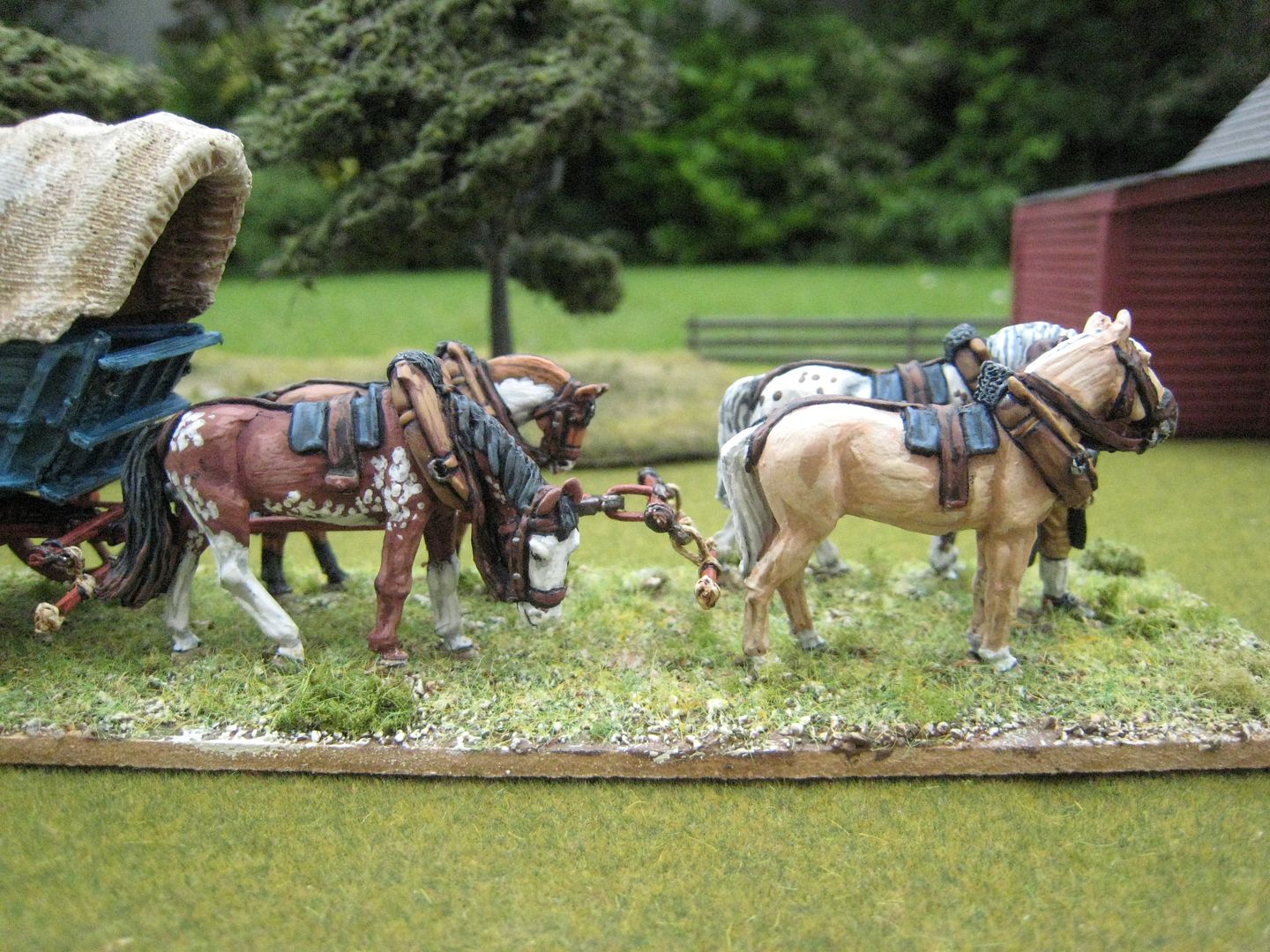
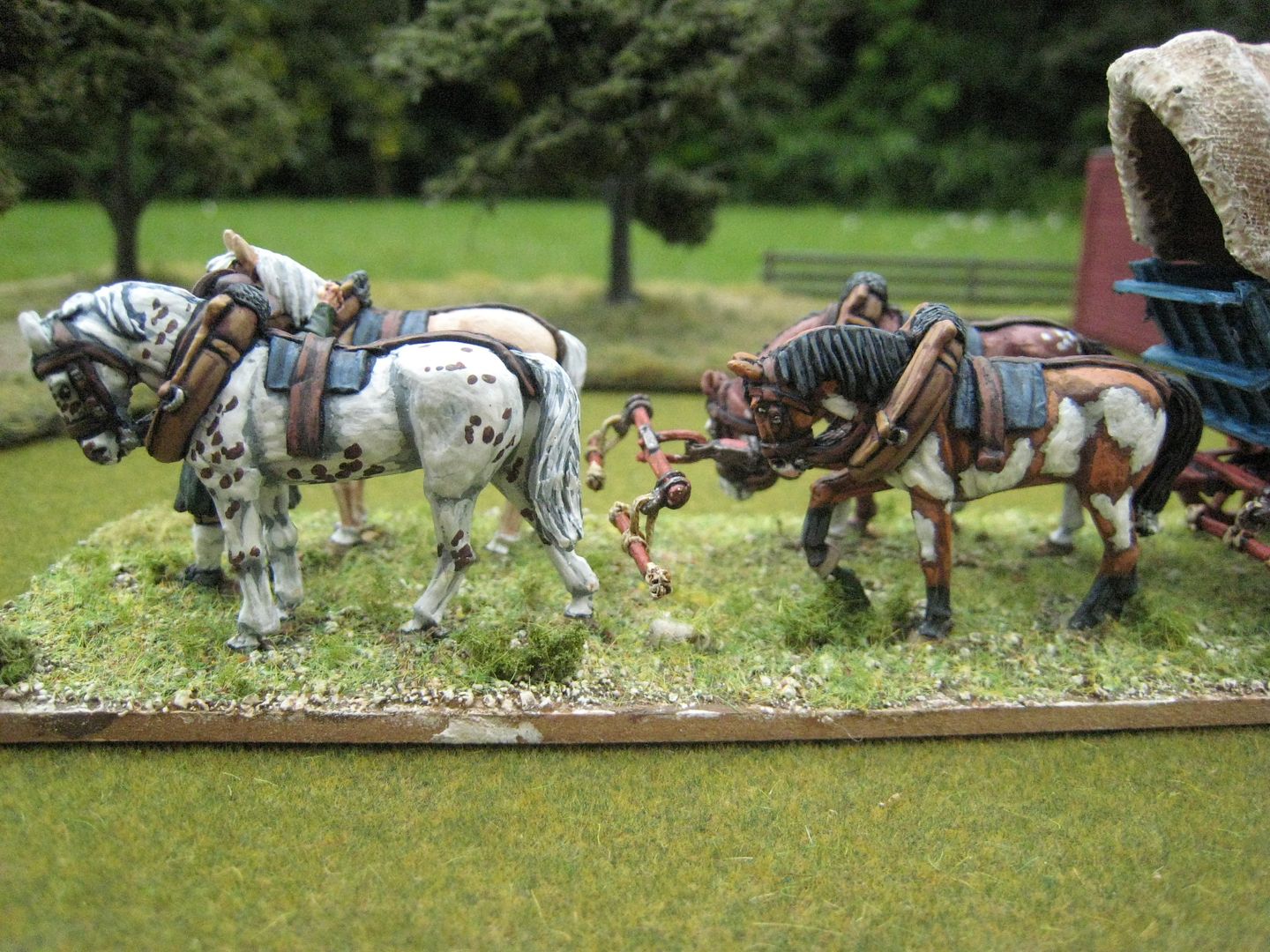
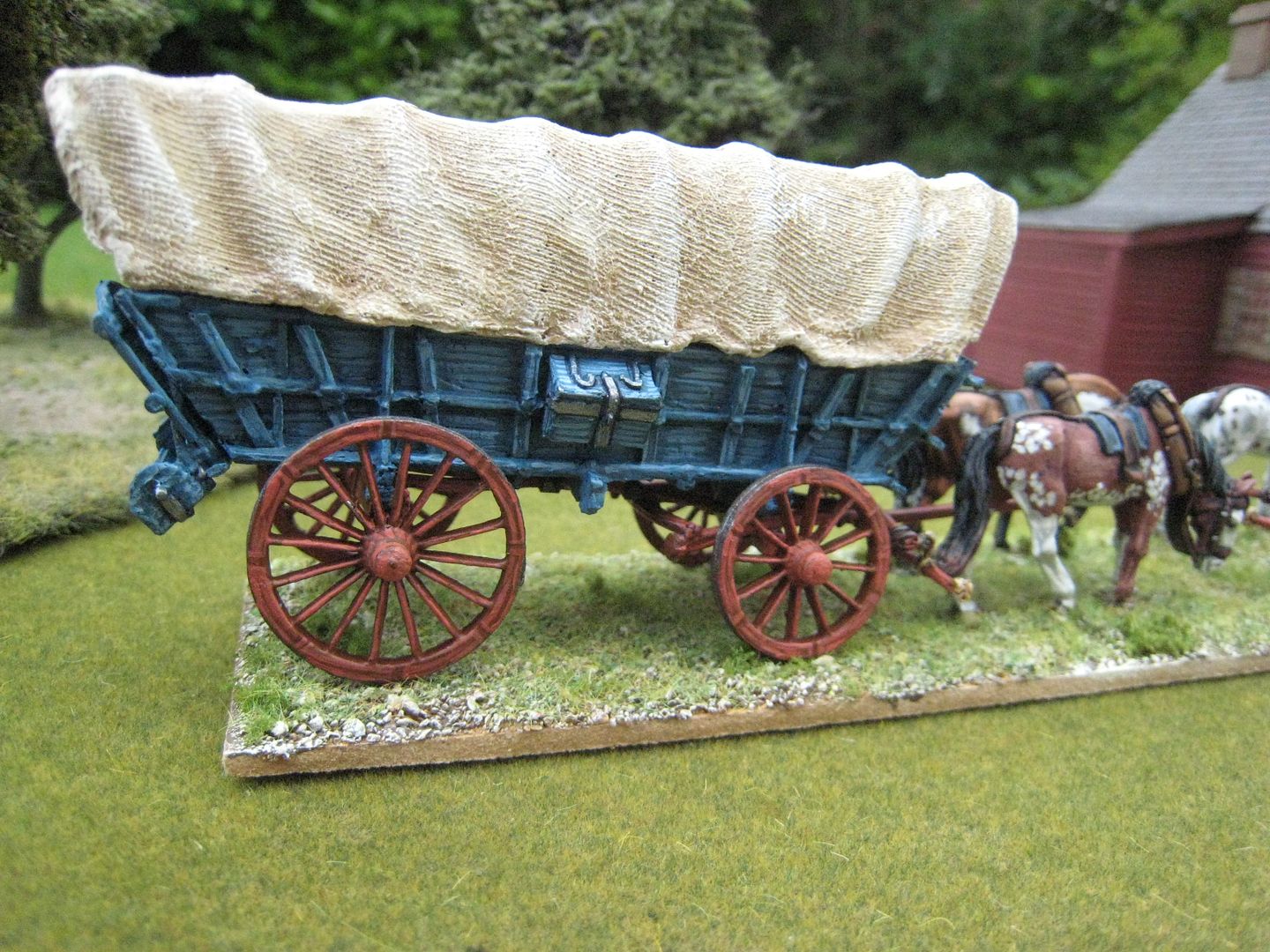
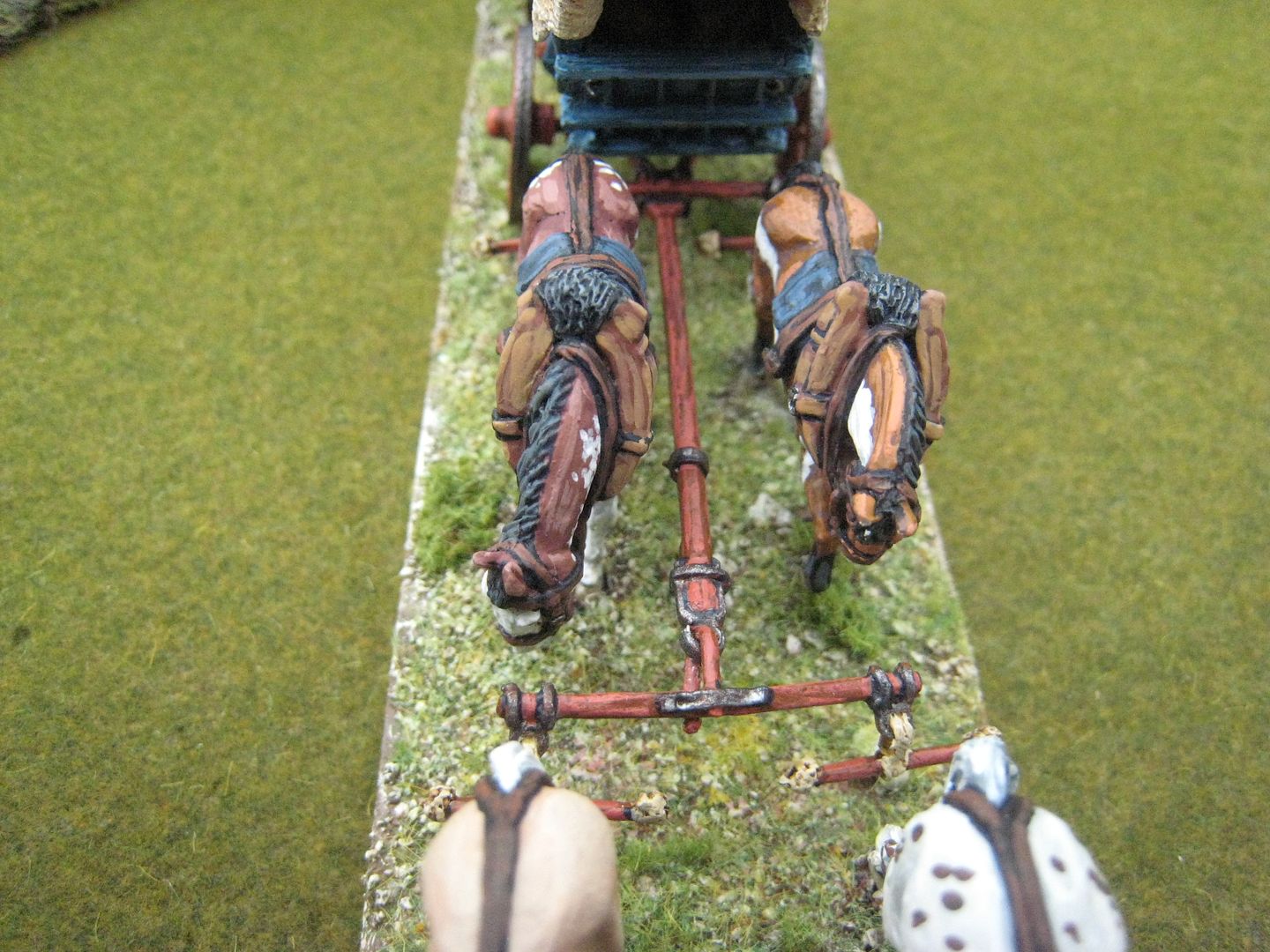
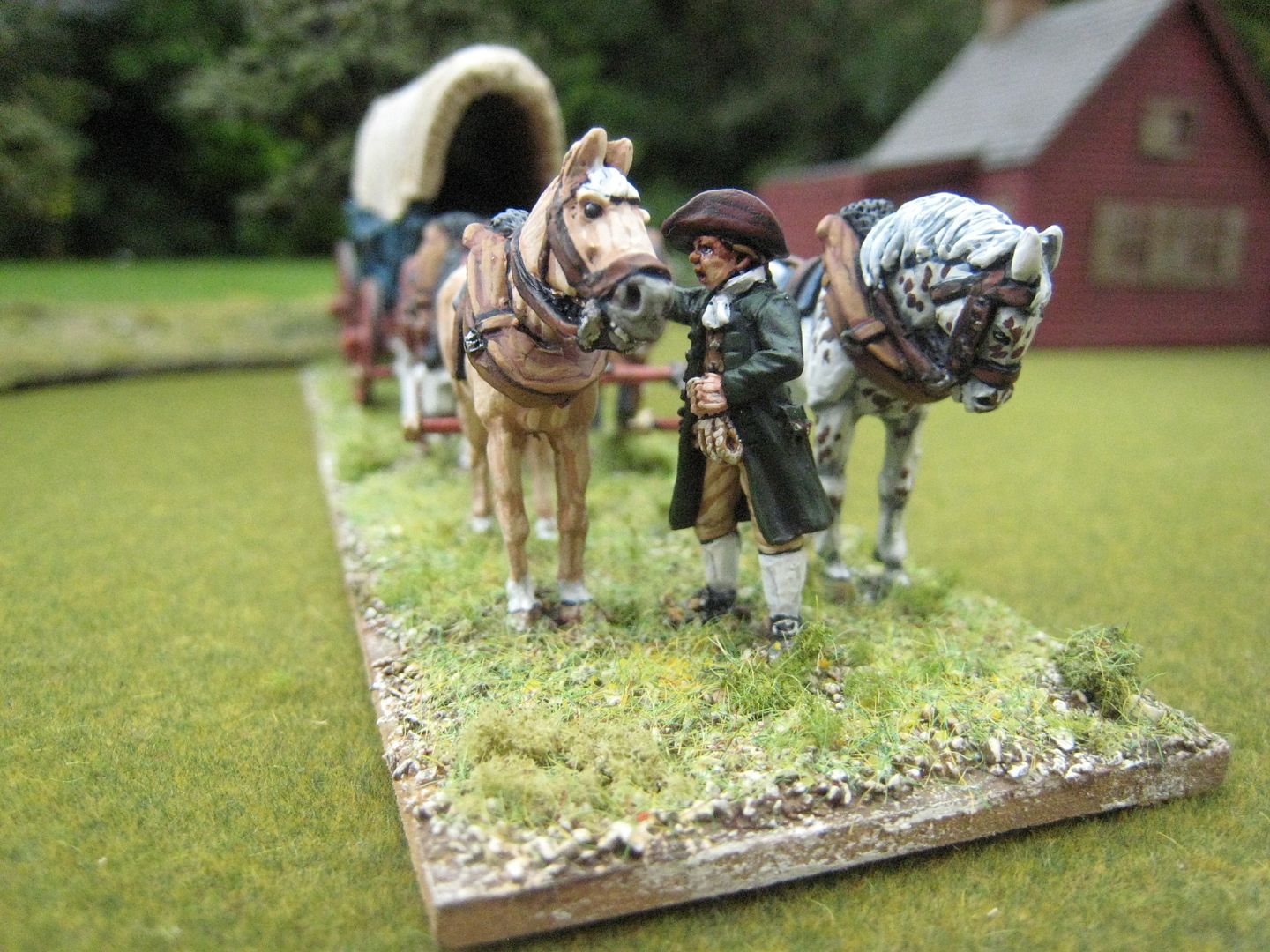


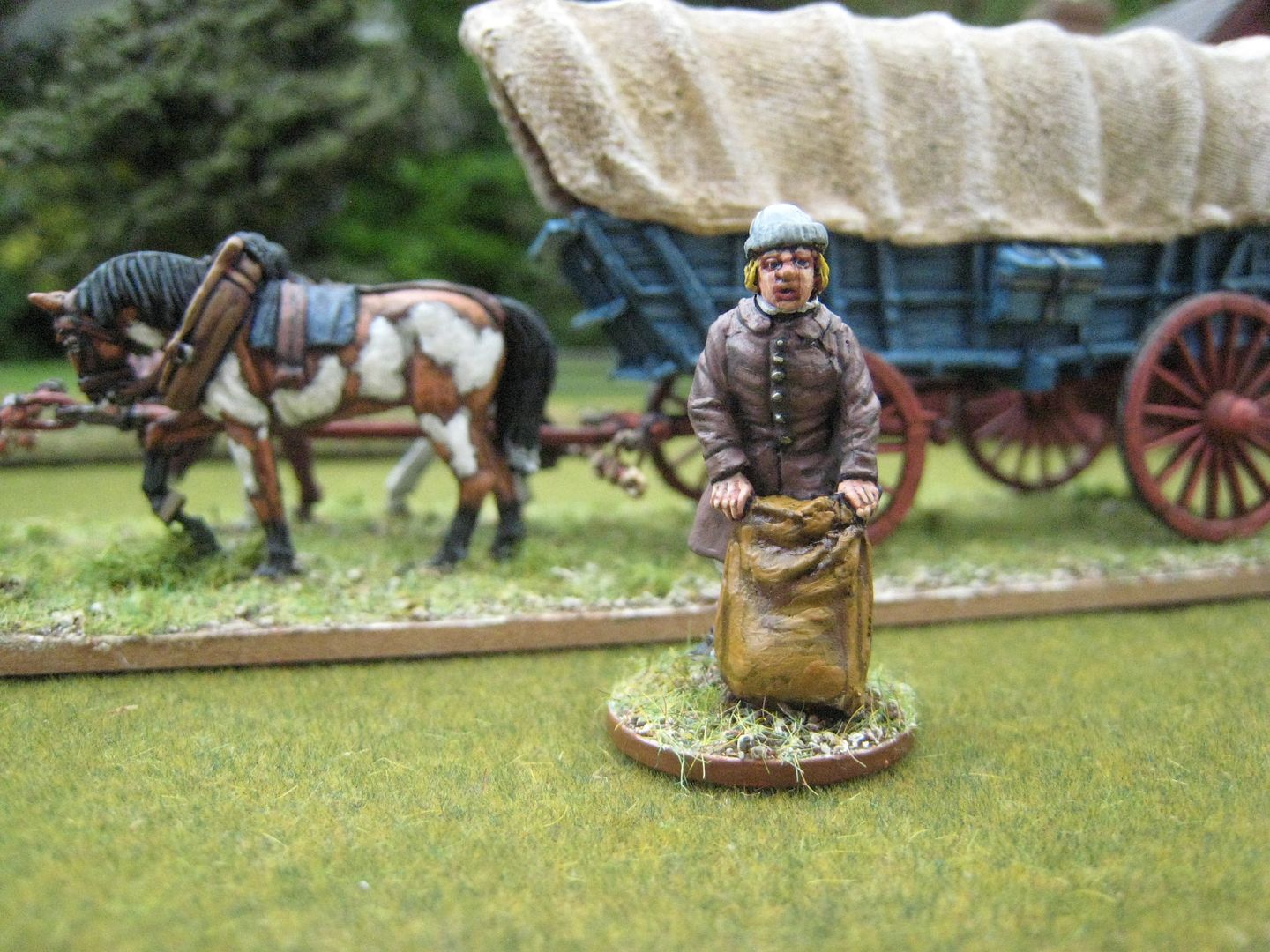
8 comments:
Well, I'm lost for words. That is just wonderful Giles. Some of the best horses I've ever seen.
A monsterous sized wagon - great work on the horses Giles!
This is absolutely superb Giles!
That, Sir, is a thing of beauty.
Georgeous!
Thanks, David!
Thanks, Simon - you should do one too!
That is a gorgeous model superbly painted.
Post a Comment